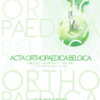Quantitative gait analysis in children with osteogenesis imperfecta: relationship between gait deviations and clinical features
Osteogenesis imperfecta; instrumented gait analysis; bisphosphonates; gait biomechanical deviations
Published online: Aug 23 2022
Abstract
Osteogenesis imperfecta is a rare congenital disease of connective tissue characterized by recurrent fractures and progressive skeletal deformities which may impact on gait. The aims of this prospective study were to identify gait deviations in children with osteogenesis imperfecta compared to age-matched controls and establish relationships with clinical features.
We evaluated 22 patients with different types of osteogenesis imperfecta using three-dimensional gait analysis. The incidence and location of frac- tures, fracture at birth, age at first fracture, use of intramedullary rodding and number of surgical in- terventions in the lower extremities, bone mineral density, hypermobility and number of injections of bisphosphonates were recorded for each patient.
Step length was lower in the osteogenesis imperfecta group compared with the control group. Kinematics showed that sagittal pelvic and transversal hip range of motion were higher in the osteogenesis imperfecta group, whereas sagittal knee range of motion during swing phase was reduced. Regarding kinetics, hip flexion moment and hip negative power peak were significantly decreased in the osteogenesis imperfecta group. Mechanical and energetic parameters were considered as normal. The principal component analysis revealed that the bone mineral density was increased in children who had received more in- jections of bisphosphonates and these had also less deficit in kinematic parameters.
Main modifications in gait parameters were observed in spatiotemporal, kinematic and kinetic data. More studies are necessary to allow stratification of severity of the osteogenesis imperfecta disease, help improve its challenging multidisciplinary treatment and ob- jectively assess treatment outcomes.
